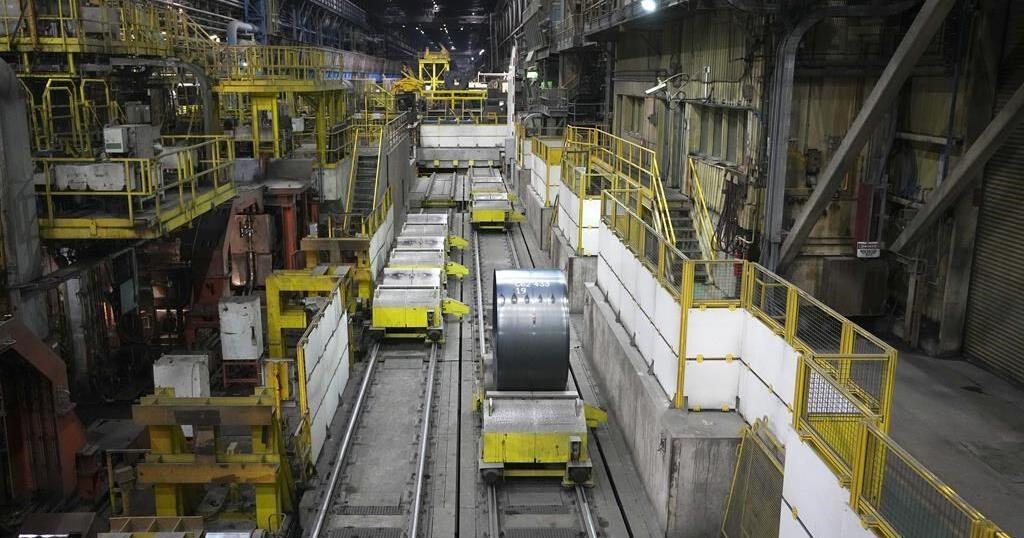BEIJING, Dec. 7 (Xinhua) — China’s economy got off to a wobbly start in 2020, when it fell victim to the coronavirus and experienced a first-quarter slump. But as the year draws to a close, it is proving to be the fastest to emerge with an economic expansion for the whole year.
Thanks to a robust year-on-year growth of 4.9 percent in its gross domestic product (GDP) in the third quarter, the country’s economy expanded 0.7 percent in the first nine months, bucking a 1.6 percent contraction in the first half year and a 6.8 percent contraction in the first quarter when the virus took its toll.
In the latest World Economic Outlook report released in October, the International Monetary Fund (IMF) projected China’s economy would grow 1.9 percent in 2020, 0.9 percentage points above the IMF’s June forecast, which would make it the only major economy to see positive growth this year.
To contain the virus and restore the economy, China’s central leadership took resolute actions to stamp out the spread of the virus and introduced policies to stimulate growth; businesses employed adaptive tactics to survive the crisis; and the public united to observe health protocols. These actions were all indispensable to the country’s hard-won gains.
DECISIVE ACTION
Of utmost importance to China’s V-shaped economic rebound was the decisive and effective control of the epidemic, without which the quick recovery would have been impossible.
On Jan. 22, the central leadership ordered the immediate imposition of tight restrictions on the movement of people and exit channels in Hubei Province and its capital city of Wuhan, the epicenter of the outbreak.
Over the Spring Festival holiday which began in late January, hundreds of millions of people abandoned their holiday plans and remained indoors for weeks. Cities were locked down, businesses were closed and public gatherings were canceled.
In little more than a month, the accelerating spread of the virus was contained. In roughly two months, the daily increase in domestically transmitted coronavirus cases fell to single digits. And in approximately three months, a decisive victory was secured in the battle against the virus in Hubei and Wuhan.
China’s swift response created the conditions for the country to cautiously and gradually reopen factories, schools and tourist sites, and thus the economy’s quarter-on-quarter growth.
Though there have been a handful of sporadic outbreaks over the past few months, the Chinese government — with its experience and an approach characterized by speedy contact tracing and mass testing — has succeeded in rapidly cutting off transmission routes.
“China’s fast recovery continues thanks to resolute measures in combatting the virus, mitigating its impact, and supporting growth,” IMF Managing Director Kristalina Georgieva said in a statement at the conclusion of the fifth “1+6” Roundtable.
ECONOMIC TEST
Following the effective control of the virus is the test of restoring China’s hard-hit economy, which has faced headwinds both at home and abroad.
The government has rolled out a raft of macro-policy measures, including increased fiscal spending, tax reliefs, and lending rate and reserve requirement ratio cuts to stabilize industrial chains and employment.
To maintain stable liquidity while avoiding a flooded market, China’s central bank has put more focus on enabling structural policy tools, including re-lending and rediscount programs, to play a more effective role in stabilizing businesses and jobs.
China’s financial institutions are projected to save enterprises 1.5 trillion yuan (about 229.5 billion U.S. dollars) this year through measures to boost the real economy.
On the back of supportive policies, the industrial sector was among the first to rebound, with value-added industrial output posting the first expansion this year in April.
Recovery was uneven at first, but gradually broadened to more sectors including consumption and services as life and production normalized. China’s booming digital economy also played a vital role in the process.
Chinese internet and logistics companies have been leveraging their strong technological and supply chain management capabilities, as well as their large user bases, to help contain the virus and facilitate work resumption.
“The latest encouraging economic data from China gives us an insight into the recovery in store when a vaccine is developed and the outbreak is contained,” Mark Haefele, chief investment officer with UBS Global Wealth Management, said in a research note in October.
While some investors find it hard to look beyond rising case numbers and new lockdowns amid the second wave of COVID-19 across the West, “China’s recovery offers an encouraging precedent for the rest of the world,” said Haefele.
NEW DEVELOPMENT PATTERN
At the strategic level, China is adapting to the change by putting forward a new development pattern of “dual circulation,” in which domestic and foreign markets reinforce each other, with the domestic market as the mainstay.
While the concept may sound new, its underlying purpose of shifting the economy from an export- and investment-driven market to one focusing more on domestic demand is largely a continuation of goals the government laid out over a decade ago.
In 2019, China’s GDP per capita exceeded 10,000 U.S. dollars for the first time in history, indicating huge opportunities in the domestic market with a vast consumer base and growing supply capacities.
Analysts say that China’s continued opening-up efforts and deepening international cooperation under the new development pattern will offer more opportunities to the world and bring shared prosperity for all. Enditem
Let’s block ads! (Why?)

Source link
Related

























